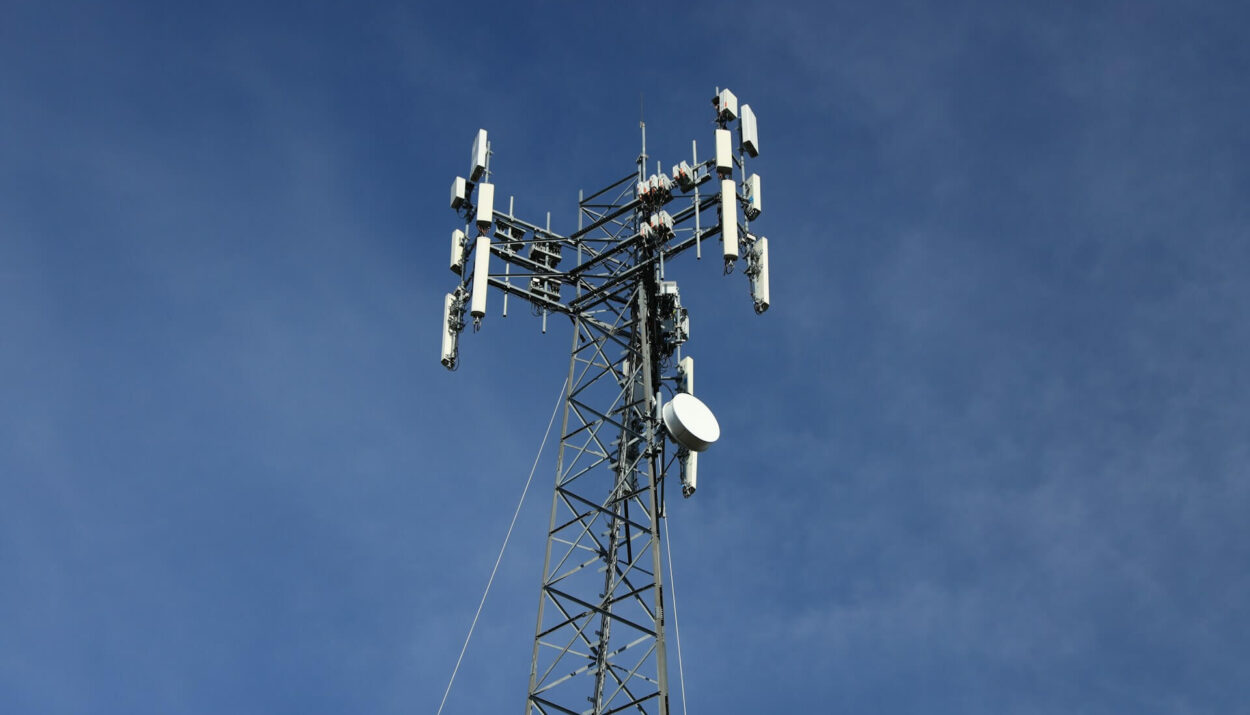From the inception of wireless communication to the latest technological breakthroughs, each passing generation of mobile networks has redefined the way we live and work. With the arrival of 5G, we stand on the cusp of another transformative era in mobile connectivity.
This advanced fifth-generation wireless technology promises not just faster internet but an entire ecosystem of innovation that will shape the future in ways both profound and yet to be fully understood.
In this all-encompassing exploration, we will dissect the core technologies behind 5G, unravel its potential impacts across various industries, and prepare you for the shift that is about to occur in the digital landscape.
The Evolution of Mobile Standards
Before we can understand the extent of 5G’s capabilities, it is imperative to grasp the evolutionary path that mobile networks have traversed. Each generation, from 1G to 4G, has brought about significant improvements in terms of speed, latency, and data capacity.
1G
The first generation of mobile networks, 1G, launched in the 1980s. It marked a pivotal shift from landline to mobile telephony, enabling users to make calls without being tethered to a physical location. However, the data transfer capabilities were nonexistent, limiting 1G to voice calls only.
2G
The introduction of 2G’s digital transmission and encryption paved the way for SMS and basic data services. This generation is also notable for birthing the Global System for Mobile Communications (GSM), a standard that would unify mobile technologies worldwide.
3G
The third generation of mobile networks, 3G, was the first to offer mobile broadband, enabling faster internet speeds, video calling, and streaming services. This marked the beginning of the mobile internet revolution, and smartphones started to become mainstream.
4G
The fourth generation, 4G, took mobile data to a new level with significant improvements in speed, capacity, and latency. It facilitated the rise of mobile services such as high-definition mobile video, with technologies like Long-Term Evolution (LTE) becoming the standard.
Unraveling the Mysteries of 5G
With the groundwork laid by the previous generations, 5G seeks to create a mobile network that is not only extremely fast but also intelligent, flexible, and robust enough to support the burgeoning Internet of Things (IoT) ecosystem.
Enhanced Mobile Broadband (eMBB)
The most immediate benefit that 5G promises is eMBB, which will deliver significantly faster mobile internet and broader coverage. This will enhance a myriad of applications, from ultra-high-definition streaming to immersive virtual reality experiences.
Ultra-Reliable Low-Latency Communication (URLLC)
5G’s unique capacity for URLLC will make it possible to have nearly instantaneous communication, a critical requirement for mission-critical services like remote surgery, where any delay could be a matter of life or death.
Massive Machine Type Communications (mMTC)
Perhaps the least understood but most consequential aspect of 5G is its ability to connect a massive number of devices, forming the backbone of the IoT. This will enable smart cities, autonomous vehicles, and industrial automation on a scale previously unattainable.
The Impact on Industries
Every industry will be touched by the ripple effects of 5G, but some will witness more profound changes than others. Here’s a glimpse of how various sectors are poised to transform:
Healthcare
In addition to improving emergency response systems, 5G will open the door to telemedicine and remote patient monitoring, allowing for personalized healthcare and cost-effective medical services even in remote areas.
Automotive
The automotive sector is on the brink of a revolution, with 5G enabling vehicle-to-everything (V2X) communication that will usher in the era of smart and connected cars, improving road safety and optimizing traffic flow.
Manufacturing
With 5G, manufacturers can build highly flexible and efficient smart factories. The technology’s low latency will support real-time monitoring and control of machinery, predictive maintenance, and the coordination of autonomous robots on the factory floor.
Entertainment
The entertainment industry is set for an overhaul with 5G’s eMBB capabilities. From interactive live sports streaming to augmented reality gaming, the new network will redefine how we consume and engage with digital content.
Consumer Implications and Expectations
5G will redefine what consumers expect from their mobile experiences. Here’s how it’s likely to change the game:
Speed and Performance
Consumers will experience immediate benefits such as faster download and upload speeds, instant app loading times, and seamless 4K streaming on mobile devices, blurring the line between mobile and wired internet experiences.
Device Innovation
The launch of 5G will herald a new generation of smartphones and devices specifically designed to harness the network’s full potential. These devices will not only be faster but also have improved battery life and support a host of innovative features.
Augmented Reality and Virtual Reality
With the higher bandwidth and lower latency provided by 5G, AR and VR applications will become more widespread, changing the way consumers interact with the digital and physical worlds.
The Infrastructure Challenge
With all the buzz around 5G, it’s important to acknowledge the significant infrastructure required to make this vision a reality. This includes a dense network of small cells, fiber-optic cables, and an upgrade to the existing telecommunication towers.
Small Cells
These miniature base stations are pivotal in extending 5G coverage, as they can be easily deployed in urban settings and high-density areas where traditional cell towers may be insufficient.
Fiber-Optic Cables
The backbone of 5G networks, fiber-optic cables are the key to delivering the high speeds and low latency that 5G promises. Significant investments in fiber-optic infrastructure are critical for a successful 5G rollout.
Spectrum Allocation
5G operates across a wide swath of the electromagnetic spectrum, and allocating the necessary frequencies for commercial use is a complex regulatory challenge that requires international cooperation and local policymaking.
The Road to 5G Adoption
The transition to 5G is a multi-faceted challenge that extends beyond the technology itself. From regulatory support to public acceptance, several factors will influence the pace of 5G adoption.
Spectrum Auctions
Governments around the world are making parts of the spectrum available for 5G use through auctions. The allocation of the “sweet spots” within the spectrum and the subsequent auction processes are crucial in expediting the 5G rollout.
Technological Innovation
Telecommunication companies and tech giants are investing heavily in 5G research and development, creating a competitive environment that will drive technological innovation and speed up the deployment of 5G networks.
Consumer Education and Experience
For 5G to succeed, there must be a concerted effort to educate the public on its capabilities and benefits. Rolling out 5G in select cities and allowing consumers to experience its advantages first-hand will be pivotal in driving adoption.
Challenges and Controversies
While the promise of 5G is immense, there are also significant challenges and controversies surrounding its deployment. These include concerns about health risks, the digital divide, and the potential for new security vulnerabilities.
Health Concerns
The rollout of 5G has sparked debates about potential health risks associated with increased network densification and the use of higher-frequency bands. Addressing these concerns through transparent communication and ongoing research is essential.
Digital Equity
There’s a risk that 5G could widen the digital divide, leaving rural and underserved communities behind. Bridging this gap will require innovative solutions and public-private partnerships to ensure universal access to 5G.
Security and Privacy
The expansion of 5G networks gives rise to new security and privacy challenges. Ensuring the integrity of the network and protecting user data in a 5G world will demand robust cybersecurity measures and international cooperation.
Global Perspectives on 5G
The push for 5G is a global phenomenon, with different regions approaching its deployment with varying speeds and strategies. Here’s a snapshot of how countries around the world are gearing up for the 5G revolution.
The United States
The US has been at the forefront of 5G development, with significant investments from major carriers and initiatives to make 5G spectrum available. However, challenges such as the rural-urban digital divide and spectrum allocation remain.
China
China is aggressively pursuing 5G expansion, with a national strategy to lead the world in 5G technology. The country’s state-led approach has allowed for rapid infrastructure deployment, but it has also raised concerns about technological dominance and security.
Europe
European countries have taken a more cautious approach to 5G, focusing on regulation and standardization. The European Union has set guidelines for member states to ensure a coordinated and secure 5G deployment.
Emerging Markets
5G offers significant opportunities for emerging markets to leapfrog traditional infrastructure constraints. Countries in Africa and Southeast Asia are looking at 5G as a catalyst for economic growth and social transformation.
The Future With 5G
What will the world look like with ubiquitous 5G connectivity? The possibilities are as vast as they are varied, but some trends are already starting to take shape.
The Rise of Smart Cities
5G is a critical enabler for smart city initiatives, offering the connectivity needed for a wide range of applications, from traffic management and public safety to energy efficiency and waste management.
Autonomy and Robotics
Industries that rely on autonomous systems and robotics, such as agriculture and logistics, will see a surge in efficiency and innovation with 5G, thanks to improved connectivity and real-time data exchange capabilities.
The Maturation of IoT
5G will supercharge the growth of the IoT, with billions of connected devices transmitting and receiving data at unprecedented rates, enabling new services and business models across all sectors.
The Digital Transformation of Business
5G will be at the heart of the digital transformation of businesses, providing the connectivity, speed, and flexibility required for next-generation technologies like AI, blockchain, and edge computing to thrive.
Conclusion
The era of 5G is not just about an incremental improvement in mobile technology; it’s about a fundamental shift in the way we connect with the world around us. It’s a catalyst for innovation, an engine for economic growth, and a platform for the next wave of digital transformations.
With 5G, the future of mobile connectivity is bright, and the opportunities are limitless. The world is on the brink of a new technological renaissance, and the time to prepare for it is now. Whether you’re a consumer, a business leader, or a policymaker, the 5G wave is one you cannot afford to miss.





